Belts and Support Straps
A guitar strap can be a highly personal choice. Straps are available in many materials and designs, with favorites being black leather and tweed. A wide and soft leather strap can help distribute the weight of a heavy guitar, such as a Les Paul, evenly so that it doesn’t feel like it’s cutting into your shoulder. Most straps are usually adjustable in length, while others adapt by changing the buckle position.
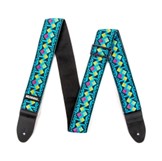
Cases and Gig Bags
There are many stylish options for transporting your guitar. For tours and long-distance travels, most musicians prefer the additional protection of a hard case – guitar case. These cases are usually made of ABS plastic, which can be a bit heavy, but in recent years, polyfoam-type cases have become popular as they offer protection while being very lightweight.

For everyday use, many guitarists prefer a shoulder bag, usually padded. These soft cases are quite economical and typically provide sufficient protection.
If you are planning to travel with your instrument by plane, it’s worth checking with the airline if you can carry your guitar as a carry-on in a padded soft case. If that’s not feasible, then a hard guitar case is the safer choice.
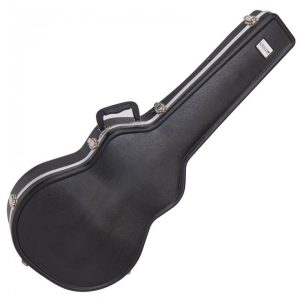
Stands
Guitars and basses can be quite vulnerable to accidents, even in the most careful hands. No guitar should simply rest on an amplifier – a stand is always essential, making your guitar easily accessible. Things to consider when choosing a stand for a guitar or bass may include the number of instruments you want to support, whether the stand should have neck support, or if you prefer it to be foldable for easier transport and storage. It’s also worth noting that the rubber that comes in contact with certain parts of the instrument may pose a problem for the thin layers of finish that a guitar like nitro finish might have, typically found on vintage instruments. Finishes like polyurethane, which are more commonly used nowadays, usually don’t have the same issue. There are also wall-mounted guitar stands that save space and often look more impressive.
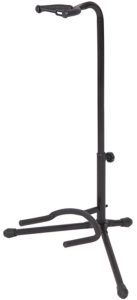
Cables
A reliable cable is essential for any serious guitarist – no one wants the sound to suddenly cut out during an epic solo due to a cheap, faulty cable. Of course, this applies not only to your instrument cable but also to all the connections in your setup, including patch cables you might use in your pedalboard and power cables. It’s never a bad idea to have a spare one on hand just in case you need it. There aren’t many things you need to know when choosing cables – the important thing is to buy the best quality you can afford, which typically are flexible and have metal connectors at their ends.
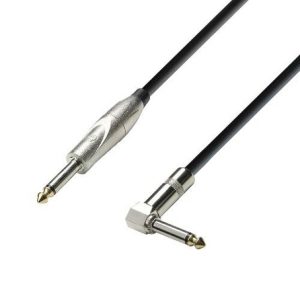
Tuners
Most guitarists always carry an electronic tuner. Many times, it’s not easy to find a quiet place to tune. A chromatic tuner can be very helpful, especially in an environment where time may be limited. Chromatic tuners differ quite a bit from the ones that were simply called guitar tuners in the past, as the mechanism recognizes the note you are closest to and is usually suitable for tuning all instruments such as guitar, bouzouki, mandolin, balalaika, etc. Most pedal tuners with a mute footswitch lower the output to the amplifier, so no one can hear your tuning. There are various types of electronic tuners on the market, each with its own advantages.
Pocket Tuners: These are small, budget-friendly devices that generally work just as well as others. The drawback is that they are not designed to be used constantly (e.g., during a live performance) due to their lightweight design and small screens.
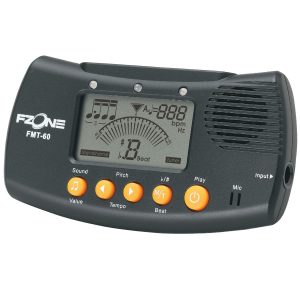
Pedal Tuners: These tuners with a footswitch feature a more advanced circuit for more accurate tuning, greater durability, and a larger screen, which is usually illuminated for better visibility from a distance. They also have a circuit that does not degrade the signal of your guitar at all when the tuner is not in use (true bypass circuit).
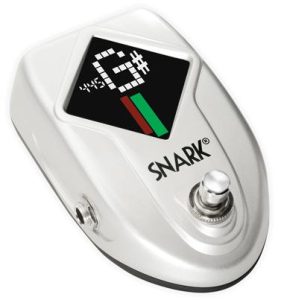
Clip-On Tuners: These devices typically clip onto the headstock of the guitar. They sense vibrations and do not require cables, making them very user-friendly with a small and convenient size, providing accurate tuning. One of the notable brands is Snark, known for its clip-on tuners used by millions of guitarists worldwide.
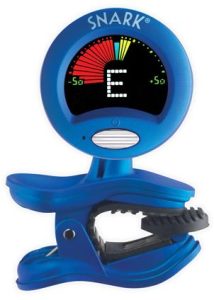
Capo
A capo is particularly useful when you want to change the key of a song to match your voice while still using chord shapes as in open strings. Usually made of metal, they have a clamp-like shape and are placed on the strings. The more affordable ones are constructed with a strap that needs to be tightened well to achieve a better fit.
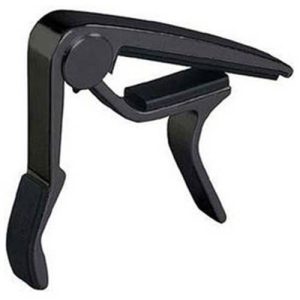
Cleaning - Maintenance
Today, there is a wide range of products for the proper maintenance and cleaning of the guitar. Depending on the area and the type of surface you want to clean, there is a corresponding product. For example, if you want to revive the color of your fretboard made of dark wood – usually rosewood – then the appropriate cleaning solution is lemon oil (*not suitable for light-colored woods like maple). If you want to restore the original gloss to the body of the guitar, then the guitar cleaner/polish to use is DUNLOP 65 Formula. A small amount on a cleaning cloth can work wonders, removing dirt or fingerprints, restoring the original shine to lacquered surfaces. Another popular product is string cleaner. Use DUNLOP 6582 Ultraglide string cleaner to maintain your string set always fresh, extending their lifespan with a simple application after each use. The string cleaner has a special applicator surface to deposit only the necessary amount while not drying out at the same time.

Conclusion
There are so many products that keep us guitarists satisfied, with new ones coming out almost every day. There are so many that it’s hard to keep track, but we hope that this article has helped you stay informed about some of the most important ones. The MusicPower team is always available to help you choose what suits your needs and budget best.



